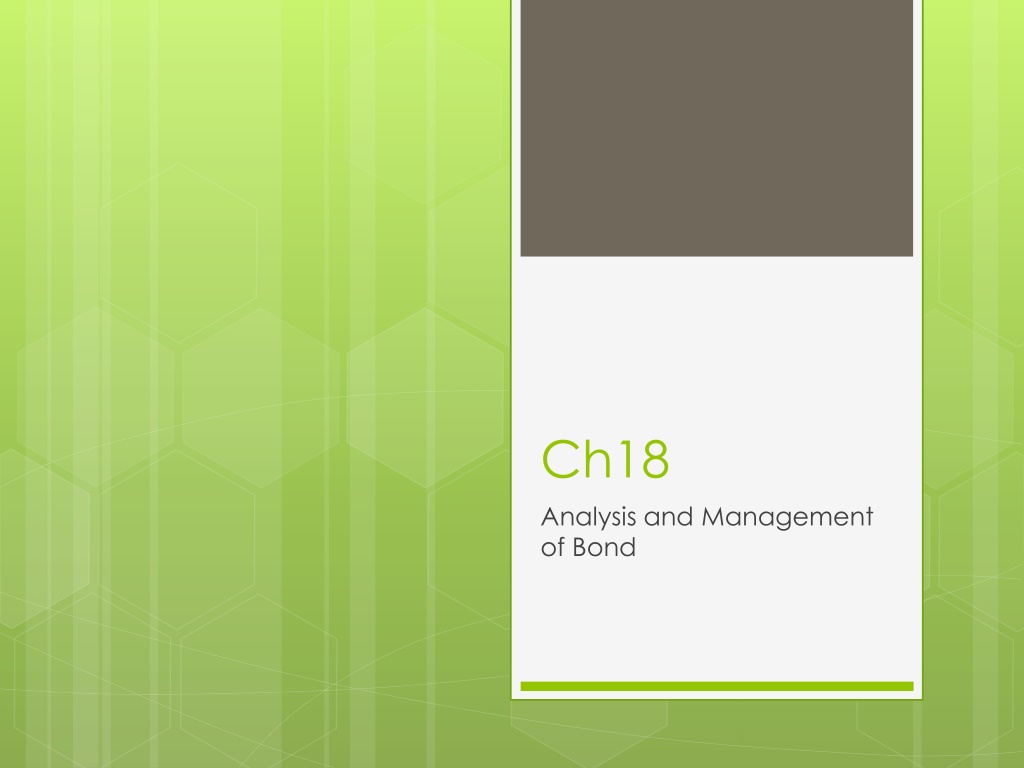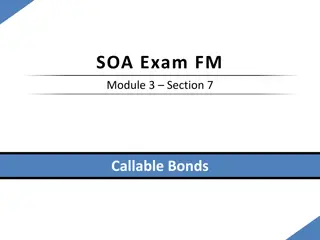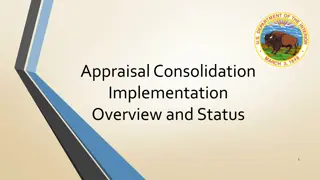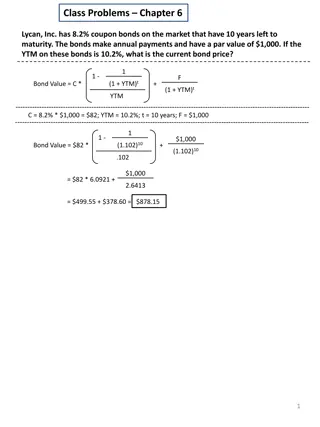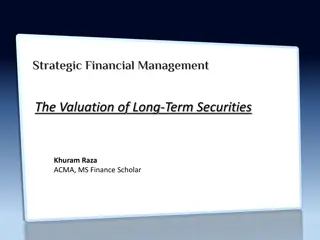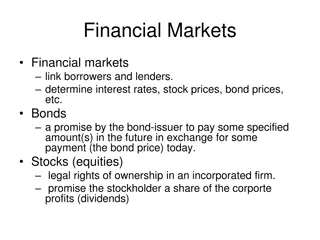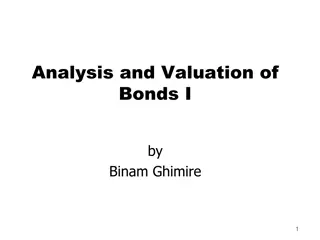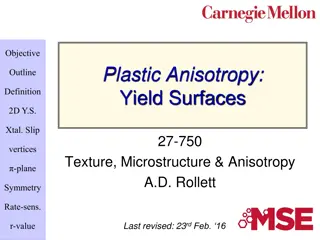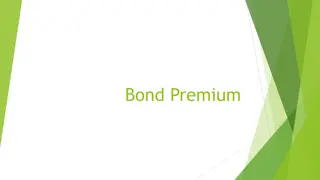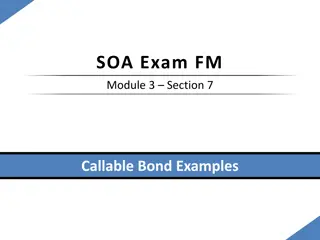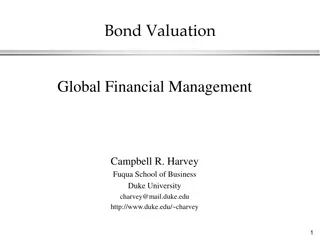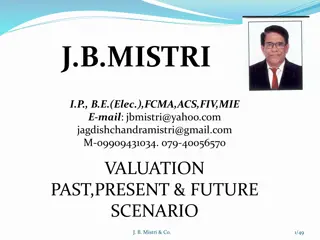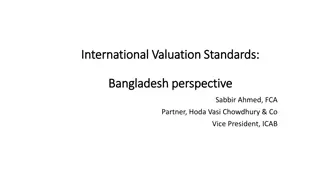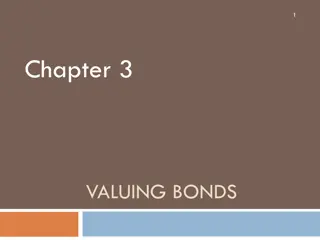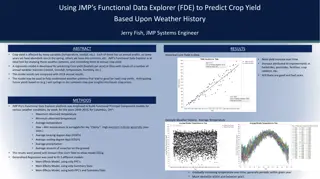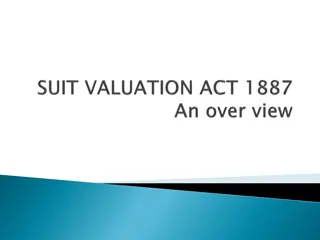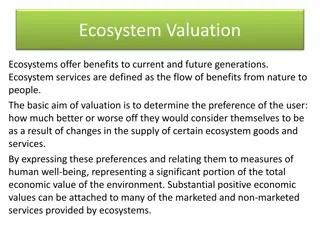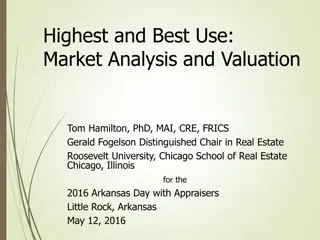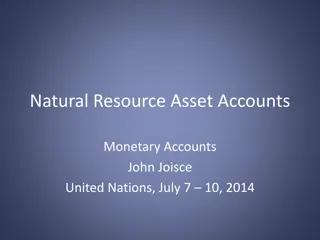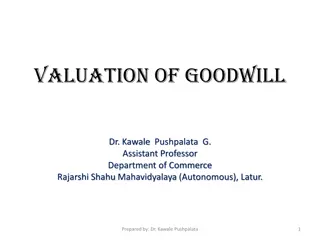Understanding Bond Valuation Models and Yield Relationship
Explore the fundamentals of bond valuation, including the present value model and the yield model, to understand how bond prices are determined based on factors like market price, coupon payments, and yield to maturity. Learn about the price-yield curve, convexity, and how to calculate expected yield based on market value and face value of the bond. Make informed decisions on buying or selling bonds based on promised yields and required rates of return.
Download Presentation

Please find below an Image/Link to download the presentation.
The content on the website is provided AS IS for your information and personal use only. It may not be sold, licensed, or shared on other websites without obtaining consent from the author. Download presentation by click this link. If you encounter any issues during the download, it is possible that the publisher has removed the file from their server.
E N D
Presentation Transcript
Ch18 Analysis and Management of Bond
The Fundamentals of Bond Valuation The Present Value Model 1-1 1+i/2 ( i/2 ) N*2 Pp Pm=C + 1+i/2 ( ) N*2 where: Pm=the current market price of the bond n = the number of years to maturity Ci= the annual coupon payment for bond i i = the prevailing yield to maturity for this bond issue Pp=the par value of the bond
The Fundamentals of Bond Valuation Price-yield curve: Price moves inverse to yield Yield < Coupon, premium Yield = Coupon, par Yield < Coupon, discount
The Fundamentals of Bond Valuation Price-yield relationship is not a straight line, rather it is convex As yields decline, the price increases at an increasing rate As yields increase, the price declines at a declining rate This is referred to as convexity
The Fundamentals of Bond Valuation The Yield Model Instead of computing the bond price, one can use the same formula to compute the discount rate given the price paid for the bond It is the expected yield on the bond If the Price is Higher than face value Rd= YTM = int - ( rs/n) (p+FV) / 2 int= interest payment rs= raise in value of bond n= years to maturity p= market value of bond FV= face value of bond
The Fundamentals of Bond Valuation If the Price is lower than face value YTM = int +( d/n) (p+FV) / 2 int= interest payment d= decrease in value of bond n= years to maturity p= market value of bond FV= face value of bond If the payments are semiannual then we always multiply the n*2 and divid the interest by 2.
The Fundamentals of Bond Valuation i value is the expected (or promised) yield on the bond If the promised yield is equal to or greater than your required rate of return, you should buy the bond If the computed promised yield is less than your required rate of return, you should not buy the bond, and you should sell it if you own it
Computing Bond Yields Nominal Yield It is simply the coupon rate of a particular issue For example , a bond with an 8 percent coupon has an 8 percent nominal yield Current Yield Similar to dividend yield for stocks CY = Ci/Pm where: CY = the current yield on a bond Ci= the annual coupon payment of Bond i Pm= the current market price of the bond
Computing Bond Yields Promised Yield to Maturity (YTM) It is computed in exactly the same way as described in the yield model earlier Widely used bond yield measure It assumes Investor holds bond to maturity All the bond s cash flow is reinvested at the computed yield to maturity Example: If a bond promises an 8% YTM, you must reinvest coupon income at 8% to realize that promised return.
Computing Bond Yields Computing Promised Yield to Call (YTC) One needs to compute YTC for callable bonds 1-1 ( i/2 ) 2nc 1+i/2 Pp Pm =C + 2n-2hp 1+i/2 ( ) where: Pm= market price of the bond Ci= annual coupon payment nc = number of years to first call Pc= call price of the bond
Computing Bond Yields Realized (Horizon) Yield The realized yield over a horizon holding period is a variation on the promised yield equations 1-1 1+i/2 ( i/2 ) N*2 Pf Pm=C + 2n-2hp 1+i/2 ( ) where: Pf= the future selling price of the bond Pp= the par value of the bond Ci= annual coupon payment n = number of years to maturity hp = holding period of the bond in years i = the expected market YTM at the end of the holding period Instead of the par value as in the YTM equation, the future selling price, Pf, is used Instead of the number of years to maturity as in the YTM equation, the holding period (years), hp, is used here
Bond Valuation using spot rate The Concept we have used one discount rate for all cash flows, reflecting the overall required rate single rate valuation technique would misvalue these bonds relative to the more appropriate technique that consider each cash flow as a single bond discounted by its own spot rate Spot rate: Defined as the discount rate for a cash flow at a specific maturity Valuing the bonds with a single high rate tend to generate a value that is lower than that derived from the spot rate curve.
What determines interest rates Inverse relationship with bond prices Fundamental determinants of interest rates i = RFR + I + RP where: RFR = real risk-free rate of interest I = expected rate of inflation RP = risk premium
What determines Interest rates Effect of Economic Factors Real growth rate Tightness or ease of capital market Expected inflation Supply and demand of loanable funds
What determines Interest rates The economic forces that that determine the nominal RFR, affect all securities The interest rate of specific bond issue is influenced by factors that affect the nominal RFR but also by the unique characteristics of the bond that influences the bond risk premium (RP)
What determines Interest rates Impact of Bond Characteristics 1. Credit quality or the quality of the issue determined by its risk of default relative to other bonds. 2.Term to maturity 3. Indenture provisions, including call features, collateral. 4. Foreign bond risk including exchange rate risk
What determines Interest rates Example: bonds with different rates have different yields. AAA rated bond possess lower risk of default than BBB bond, so they have lower required yield. Note that the risk premium differences between bonds of different quality levels change dramatically overtime depending on the economic conditions. When the economy experience a recession, then the desire for quality bond increase which increase the different in yield. This difference in yield is referred to as the credit yield
Term Structure of Interest Rates It is a static function that relates the term to maturity to the yield to maturity for a sample of bonds at a given point in time Types of Yield Curves Rising yield curve: Yields on short-term maturities are lower than longer maturities Flat yield curve: Equal yields on all issues Declining yield curve: Yields on short-term issues are higher than longer maturities
Price Volatility for Bonds Five Important Relationships Bond prices move inversely to bond yields For a given change in yields, longer maturity bonds post larger price changes, thus bond price volatility is directly related to maturity Price volatility increases at a diminishing rate as term to maturity increases Price movements resulting from equal absolute increases or decreases in yield are not symmetrical Higher coupon issues show smaller percentage price fluctuation for a given change in yield, thus bond price volatility is inversely related to coupon 1. 2. 3. 4. 5.
Price Volatility for Bonds The Maturity Effect The longer-maturity bond experienced the greater price volatility Price volatility increased at a decreasing rate with maturity
Price Volatility for Bonds The Coupon Effect Exhibit 18.13 shows that the inverse relationship between coupon rate and price volatility
Price Volatility for Bonds The Yield Level Effect If yield changes by a constant percentage, the change in the bond price is larger when the yields are at a higher level If yield changes by a constant basis-point, the change in the bond price is larger when the yields are at a lower level
Price Volatility for Bonds Effects of yield level on bond price volatility
Trading Strategies Trading Strategies If interest rates are expected to decline: bonds with higher interest rate sensitivity should be selected Investor should invest in long maturity bonds and low or zero coupons
Trading Strategies Trading strategies If interest rates are expected to increase: bonds with lower interest rate sensitivity should be chosen Investor should invest in short maturity bonds with high coupons
